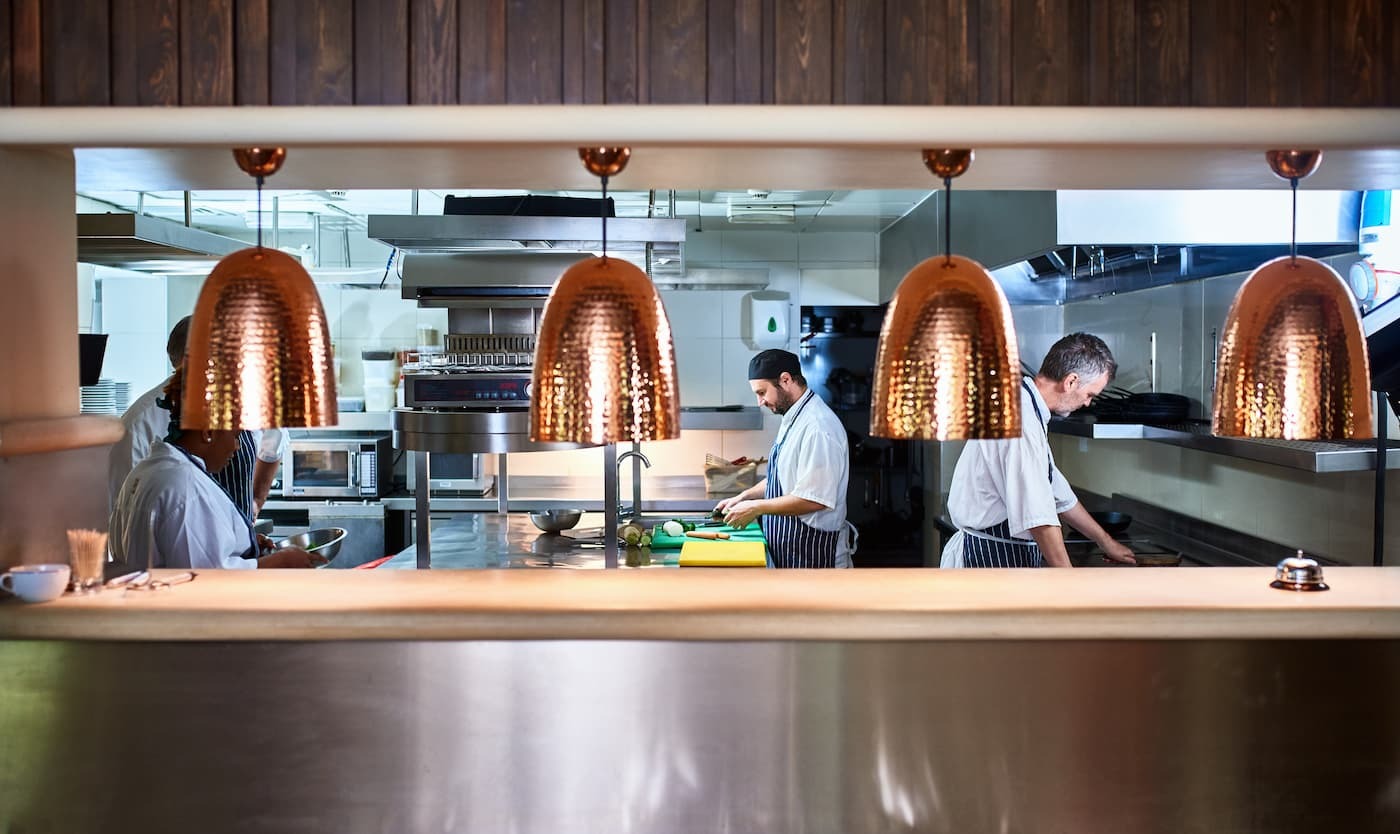Food and beverage industry trends for 2022
Editorial Team
4 min read
The food and beverage industry is on the rebound, but continues to face a tough road ahead. Having come a long way from the worst of the 2020 business interruptions, the food and beverage industry now faces the persistent challenges of inflation, labor shortages, and supply chain interruptions.
Still, the food and beverage industry is projected to return to pre-pandemic volume by the end of this year, according to data from Technomic’s 2022 Current & Projected Restaurant Industry Landscape Report created in partnership with Clover. In fact, the industry will slightly exceed its 2019 nominal sales level by the end of the fourth quarter.
That figure is being driven by menu price inflation, however, and the industry will still be 7.4% smaller on an inflation-adjusted basis by the end of 2022.
Take a look at other key takeaways from Technomic’s 2022 Current & Projected Restaurant Industry Landscape Report and how they may impact your business.
Inflation is high, but expect a slow down.
The U.S. inflation rate is higher than it’s been in roughly four decades. That means the costs of doing business are up, and many food and beverage merchants have had to adjust menu prices simply to make up for the erosion in margins.
Core menu inflation was 4.5% in 2021, but is expected to fall around 3.3% this year, according to the trend report. There’s a growing sense that pricing levels have topped out at where consumers are willing and able to spend.
That means an ongoing squeeze on profit margins for merchants. Tracking your best-selling items and smartly managing inventory can help. Clover integrates with numerous inventory apps, allowing you to track the cost of goods sold, monitor inventory in real time, and place digital orders to suppliers.
You might also check out our recent post How inflation impacts businesses and ways to overcome it.
Quick service and fast casual restaurants are leading the industry’s recovery.
Overall recovery of the food and beverage industry is being driven by quick service and fast casual restaurants. Pick-up and delivery options for off-site consumption became a lifeline for these businesses during the height of the pandemic, and that versatility continues to pay off. Digital solutions like Clover Online Ordering help streamline the process and cater to heightened customer expectations for ease and convenience.
Recovery for full service restaurants is lagging slightly behind, as patrons have become accustomed to more flexibility and off-premises dining. Still, traffic remains elevated from rates in 2020, and customers seem comfortable with their level of safety, even amid recent spikes from the Delta and Omicron variants. Due to inflation, customers are also spending more each time they dine out, but profit margins remain tight for merchants.
Cost of labor has become the greatest labor-related challenge.
Labor continues to present a challenge for food and beverage industry merchants, with labor cost ranking as the top worry. Recruiting skilled workers remains the second biggest concern for merchants seeking help.
The JazzHR app from Clover makes quick and simple work of posting job openings across multiple sites, tracking top candidates, and collaborating with other decision makers in house. Time Clock by Homebase can help maximize efficiency in scheduling and streamline payroll to save you working hours.
Our post How to source, hire and train employees brand-new to market can help you compete to win in this tight labor market.
Food costs also remain a major concern.
Inflation and ongoing disruptions to global supply chains are still impacting food prices, a major concern for merchants moving forward. That’s especially true for full service restaurants, which face a steeper climb to recovery. Many businesses have adjusted by trimming menus and raising prices.
Taking a strategic approach to inventory will continue to be crucial to success. Thrive by Shopventory reports profitability and revenue per item, and tracks what’s selling quickly and what’s not, so you can pivot to maximize your margins.
We’ve published several posts helping you address this challenge:
- Enterprise behavior: How to calculate your restaurant’s food costs
- What to do when the costs of key products or supplies go up
- Measure your business health with these 9 numbers
- Key Restaurant Benchmarks: Average Profit Margin, Prime Cost, and More
Reduced menus will give way to innovation.
Customers are growing eager for new and different experiences, which includes an appetite for innovative menu items. Balancing creativity with attention to growing your bottom line will be even more essential in the months ahead, as people continue to explore and expand their tastes.
Our post How to optimize your restaurant menu to maximize profits can help you get creative – and strategic – with your menu design.
The food and beverage industry is trending toward a full recovery, with growth rivaling pre-pandemic levels on the horizon. Clover POS solutions can help ensure your business is on the right track and in the best possible position to survive market challenges and thrive.
*Source: Technomic’s 2022 Current & Projected Restaurant Industry Landscape Report created in partnership with Clover
Related Posts
Make online orders with delivery simple with this Clover-Grubhub solution
Clover’s got restaurant delivery covered: 4 services to try
Popular Topics
Stay In Touch
Sign up and learn more about Clover.
Thank you for your subscription!
Recent Stories
- Jewelry store supplies and equipment needed for opening day
- How small businesses can use employee discounts to retain staff
- Tips and tricks for opening an outdoor pop-up restaurant
Please share your contact information
to access our premium content.
Thank you for sharing your contact information.
Download Now





